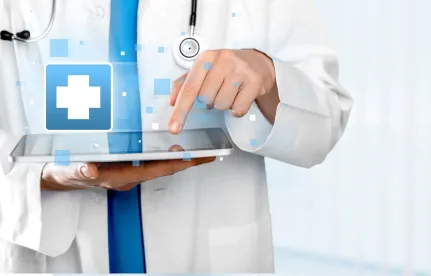In our February 13, 2019 blog post, “HIMSS19 Kicks-Off Addressing Leading Topics in Healthcare Information Technology,” we reported on the buzz that emerged from the first two days of the Healthcare Information and Management Systems Society’s (HIMSS) annual global conference that commenced on February 11, 2019. Now that the conference has concluded, it is time to discuss the key takeaways and lessons learned from the conference’s last few days regarding the application of the Internet of Things (IOT) to healthcare.
Key takeaways include:
IOT and “Connected” Healthcare – IOT architecture presents a tremendous opportunity for achieving “connected” healthcare goals. At present, providers principally rely on electronic medical record (EMR) data as the primary source of information utilized in patient treatment. Unfortunately, EMR data only represents a small percentage of data which could be useful. It does not capture a wide range of other data such as patient-generated feedback outside of provider offices/facilities, biometric data collected on a continuous basis, greater detail from medical device generated data, and data regarding community, geography and other social determinants of health. By utilizing an IOT approach where smartwatches, medical monitoring technology, shopping records, etc. are captured, digested and utilized to improve care, health care providers will be able to deliver more informed and educated care. That said, there is a long pathway to collecting information from the varied sources referenced and then digesting and utilizing such information.
Speakers Dr. Julian Goldman of Massachusetts General Hospital and David Niewolny of Real Time Innovations explained that in order to achieve a successful IOT approach, healthcare systems and technology providers need to create and enforce standards for machine to machine communication and move from a traditional server/cloud-based system architecture to “edge” intelligence where devices are able to make determinations at a device level. One example envisioned was an infusion pump fed data directly by a patient’s monitoring equipment that could make real-time changes to treatment with little or no human involvement. If developed with appropriate safeguards and oversight, such technologies offer tremendous opportunities to improve patient outcomes.
Telehealth Lessons Learned — What makes telehealth successful? As one of the earliest pathways for incorporating technology into medicine, health care systems that have been implementing telehealth platforms for a decade or more have learned some important lessons. Speakers Julie Hall-Barrow from Dallas Children’s Medical Center and Dr. David McSwain from the Medical University of South Carolina emphasized the importance of looking at telehealth as an ecosystem. The technology, in their view, is the “easy part” and often fungible. Healthcare providers who have successfully incorporated telehealth have gone beyond merely making the technology function and available. They have additionally created an ecosystem around the technology by: (i) building consensus with operations, leadership, and clinicians around the telehealth initiative; (ii) developing training and education programs to assist providers and patients with use of the technology; (iii) creating a seamless experience for patients; (iv) involving community providers in the telehealth opportunity; and (v) engaging in legislative efforts to improve reimbursement opportunities. By creating an ecosystem around the telehealth technology, providers and patients are able to recognize the value the technology offers and become invested as stakeholders in its success.


 />i
/>i

